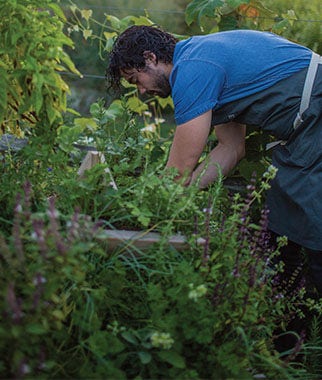We use cookies to give you the best experience on our website. These cookies are completely safe and secure and will never contain any sensitive information. Please read our Privacy Policy. By clicking "Ok" or clicking on any other content, you agree that cookies can be placed.
Kitchen Garden Design
A garden of healthy vegetables can be the prettiest spot on your plot.
Think of your garden as art, and seems more fun to consider design possibilities, says Ellen Ogden, a kitchen garden designer and the author of The Complete Kitchen Garden. Of course you need a site with plenty of sun, good soil, and wide paths for a wheelbarrow, but allow yourself the space and the freedom to express yourself, Ogden suggests.
“Vegetable gardens start with the design,” Ogden says. She created 15 different themed kitchen garden designs in her book, each one with all the appropriate practical elements but laid out with an artist’s eye. The designs are square, rectangular, and round; personal touches, including a handsome gate and arbor, a pretty garden bench, or a picnic table right in the garden, emphasize that the space is not just for cultivating tomatoes.
Rosalind Creasy, author of Edible Landscaping, grows cherry tomatoes on an arbor in her front yard in California, and plants lettuce in a grid defined by a purple-painted trellis laid right on top of the soil. “You have to have lines when you design a garden,” she says, “but they don’t all have to be straight lines.”
Creasy’s playful interpretations of traditional kitchen gardening ideas are inspiring. Like most professionals, she recommends that first-timers start with a kitchen garden small enough to manage but large enough to produce a good harvest. About 400 square feet (20 feet on a side) is a good size, but something considerably smaller also works. Barbara Damrosch, author of The Garden Primer, designed a starter vegetable garden just 12 feet on a side.
Don’t make beds too big: about three and a half feet wide works well, Ogden says, so you can reach across from either side. Frame your vegetable garden with a fence, and plant flowers and herbs in beds around it. If the garden looks inviting, you’ll be drawn to it, she says. Taking care of a pretty garden is much more satisfying than hoeing endless rows of beans.
The crops you plant should include foods you know you love, but leave room to experiment, Ogden says. Her own formula is to plant 80 percent crops she has tried before, and 20 percent new plants. This allows her to plant her three favorite tomatoes: ‘Persimmon,’ ‘Brandywine,’ and ‘Rainbow,’ with plenty of space left over to try something new. In gardening, experimentation is traditional.

